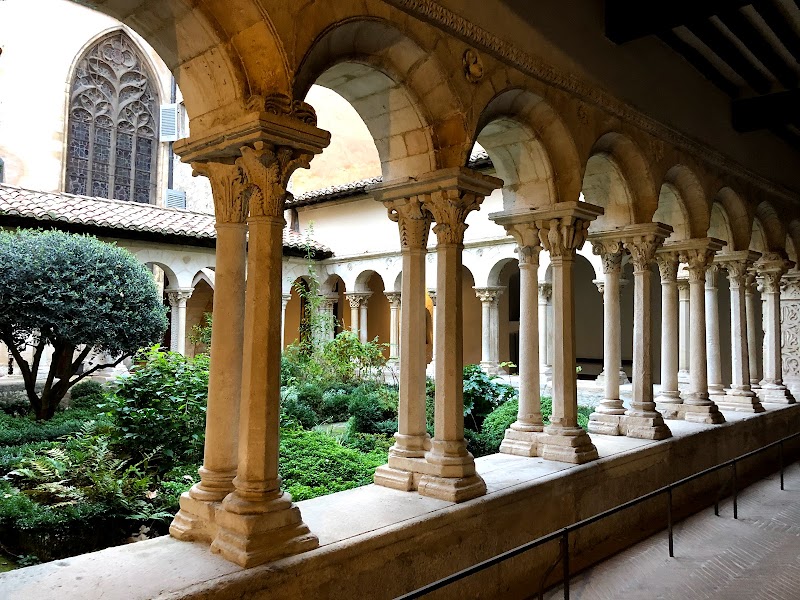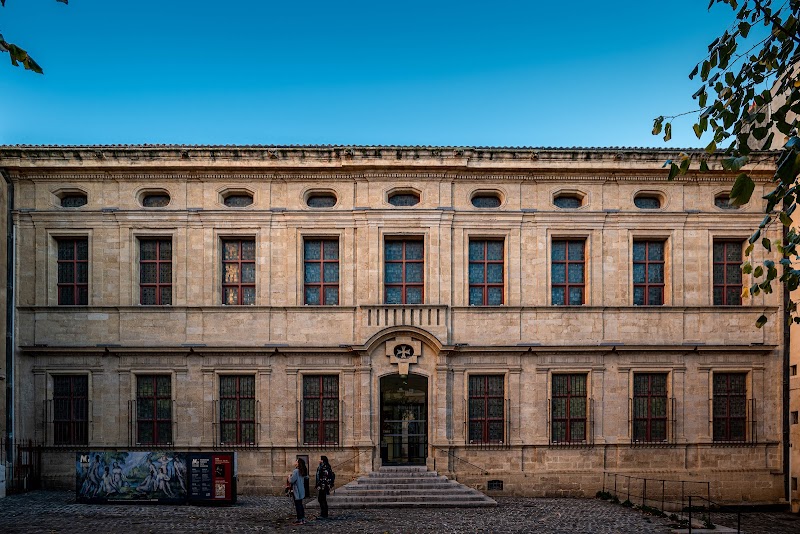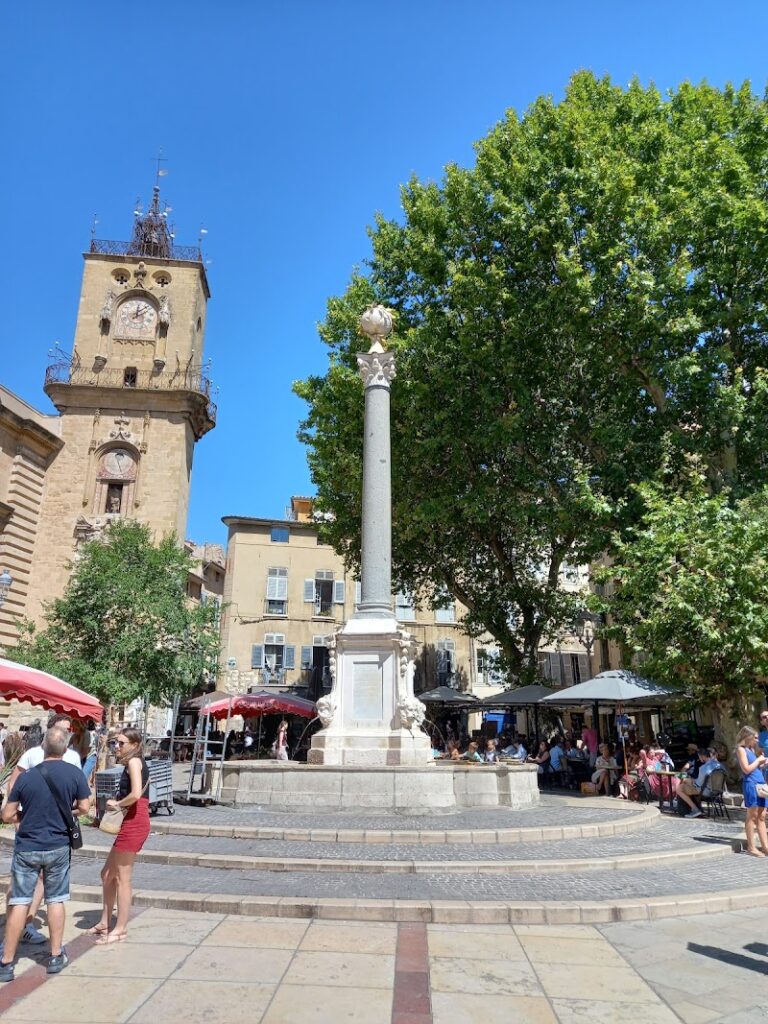Discover the Magic of Provence
Have you ever imagined immersing yourself in a world of enchanting lavender fields and sun-drenched beaches? That dream can become a reality in Provence, a captivating region in southeastern France, which receives over 30 million visitors each year. People are drawn by the allure of lavender fields in full bloom, the sun-drenched beaches of the French Riviera, and the enchanting hilltop villages. This region has inspired many artists, including Van Gogh and Cézanne, with its vibrant colors, intoxicating scents, and captivating landscapes.
Embarking on a journey to this mesmerizing region, your best ally will be a tourist map of Provence. Acting as a personal guide, it will help you navigate the myriad wonders of Provence. From its lesser-known corners to world-renowned sights, this map is your passport to a personalized and unforgettable journey through Provence. For a broader perspective, check out the tourist map of South of France.
Booking.comUnveiling the Wonders of Provence
Set your sights on a land of timeless beauty, cultural richness, and historical depth. Provence is a captivating region that will envelop you in its charm, whisking you off to a realm where tradition meets modernity, and nature blends seamlessly with human creativity.
Must-Visit Attractions in Provence
Provence is a region teeming with enchanting experiences. From the Roman ruins of Arles to the vibrant markets of Aix-en-Provence, every corner of this region is filled with unique attractions.
- Arles: Ancient Roman Ruins
- Aix-en-Provence: Vibrant Marketplaces
- Luberon: Scenic Vineyards and Orchards
- Avignon: Majestic Palais des Papes
- Les Baux-de-Provence: Medieval Fortress and Village
- Cassis: Spectacular Calanques
- Saint-Rémy-de-Provence: Birthplace of Nostradamus
Exploring the Rich History of Provence
Arles: A Walk through Ancient Rome
Step back in time to the days of gladiators and emperors in Arles. The city's remarkably preserved Roman ruins, including the iconic Arles Amphitheatre, transport you back to the days of ancient Rome. The nearby ancient city of Glanum is another must-visit site, filled with impressive Roman ruins.
Avignon: The City of Popes
Once the seat of the papacy, Avignon is a city steeped in religious and architectural grandeur. The Palais des Papes, a symbol of the church's influence in the 14th century, offers an intriguing glimpse into the city's ecclesiastical past. Don't forget to visit the Petit Palais museum, which houses a fine collection of medieval and Renaissance art.
Experiencing the Vibrant Culture of Provence
Aix-en-Provence: The City of a Thousand Fountains
Known as the city of a thousand fountains, Aix-en-Provence is a vibrant hub of culture and history. Its bustling marketplaces brim with colorful stalls selling everything from fresh produce to antiques, creating a lively atmosphere that is quintessentially Provencal. The city is also the birthplace of the famous painter Paul Cézanne, and his atelier is a must-visit for art enthusiasts.
Les Baux-de-Provence: Medieval Majesty
Les Baux-de-Provence is a picturesque village perched on a rocky spur in the Alpilles mountain range. The village's well-preserved medieval fortress offers breathtaking views of the surrounding countryside, and its stone-paved streets are lined with artisanal boutiques and charming eateries.
Embracing Provence's Natural Wonders
Luberon: A Symphony of Vineyards and Orchards
Provence's lush landscapes are a sight to behold. The Luberon, known for its scenic vineyards and orchards, offers a serene escape into nature. Here, you can enjoy a leisurely stroll, sample local wines, or simply soak in the views.
Cassis: The Spectacular Calanques
For those yearning for a taste of the Mediterranean, Cassis is a perfect destination. With its turquoise waters and dramatic limestone cliffs, the Calanques of Cassis offer a unique blend of natural beauty and adventure. Whether you prefer hiking, boating, or simply basking in the sun, the Calanques offer something for everyone. Be sure to explore more of the region's seaside attractions with the tourist map of French Riviera.
Saint-Rémy-de-Provence: Where History and Nature Converge
A visit to Provence would not be complete without exploring Saint-Rémy-de-Provence. As the birthplace of Nostradamus, this quaint town has a rich historical heritage, complemented by natural beauty in the form of the Alpilles Natural Regional Park. Also, don't miss the archaeological site of Glanum, showcasing the remnants of a prosperous Gallo-Roman city.

Practical Information for Visiting Provence
Transportation and Mobility
Provence boasts an extensive and efficient transportation system, making it easy for you to explore its charming towns and picturesque landscapes. The region is well connected by train, bus, and roads. If you're arriving by air, the main airports are Marseille Provence Airport and Nice Côte d'Azur Airport, both offering regular flights from major European cities. Upon arrival, consider renting a car, especially if you plan to explore the countryside, as it offers the most flexibility.
Schedules and Prices
When planning your trip, remember that most shops and attractions in Provence operate on a "siesta" schedule, typically closing for a few hours in the afternoon and reopening around 4pm. Restaurants often start serving dinner from 7pm. Entry fees for major attractions usually range from 10 to 20 euros, though some places offer discounts for students, seniors, or families.
Safety Tips
Provence is generally a safe region for travelers. However, like anywhere, it's always a good idea to remain vigilant, especially in crowded tourist areas where pickpockets can operate. In the countryside, ensure you're prepared for the weather and have enough water and sun protection. Always stick to marked paths when hiking to avoid getting lost or disturbing the local wildlife.
Practical Recommendations
The best times to visit Provence are from April to June and September to October, when the weather is pleasant and the tourist crowds are smaller. If you're visiting in summer, book your accommodations well in advance, as this is peak tourist season. Don't forget to pack comfortable shoes for exploring, and a jacket for cooler evenings, even in summer.
Finally, remember to respect the local culture and environment. This includes being mindful of noise levels in the serene countryside, not littering, and not picking flowers or plants, especially in the lavender fields.

Frequently Asked Questions about Provence
1. Can I experience the wine culture of Provence during my visit?
Provence is renowned for its wine culture, and there are numerous opportunities for you to delve into this vibrant tradition. You can visit family-run vineyards, attend wine tasting sessions, or even participate in a wine-making workshop. The region is particularly known for its rosé wines, but you'll also find excellent reds and whites. Remember, drinking responsibly is key to fully savoring this experience.
2. What local culinary delights should I try in Provence?
Provence's cuisine is a mouthwatering blend of local produce, seafood, and spices. Don't miss out on the "bouillabaisse", a traditional fish stew, or the "ratatouille", a vegetable medley. For dessert, try the "tarte tropézienne", a cream-filled pastry. Local markets also offer an array of fresh produce and regional specialties – a perfect opportunity to taste and discover the local gastronomy.
3. Are there any unique festivals or events in Provence I should plan for?
Provence hosts a variety of festivals and events throughout the year, each with its own unique charm. The "Fête de la Musique" in June fills the streets with live music, while the "Festival d'Avignon" in July showcases theater and dance performances. The "Corso de la Lavande" in August celebrates the lavender harvest with a vibrant parade. Remember, these events can get busy, so plan your visit accordingly.
4. What languages are spoken in Provence? Will I manage with English?
French is the official language, but you'll find that English is widely spoken in tourist areas, hotels, and major attractions in Provence. However, learning a few basic French phrases can enhance your travel experience and show respect for the local culture.
5. How can I experience the art scene in Provence?
Provence boasts a vibrant art scene, from galleries and museums to open-air installations and art festivals. Museums such as the "Musée Granet" in Aix-en-Provence or the "Musée Matisse" in Nice are must-visits. For contemporary art, the "Collection Lambert" in Avignon is a great choice. Also, don't miss out on the "Fondation Maeght", a modern art museum nestled in the hills of Saint-Paul de Vence.
6. What are some eco-friendly travel tips for visiting Provence?
There are several ways to ensure your visit to Provence is sustainable and respects the local environment. Use public transportation or bike rentals to reduce your carbon footprint. Opt for locally sourced food and support small businesses. Lastly, always remember to leave no trace – dispose of waste properly and respect natural and cultural sites.

